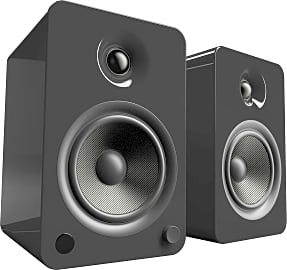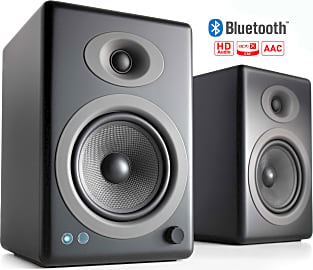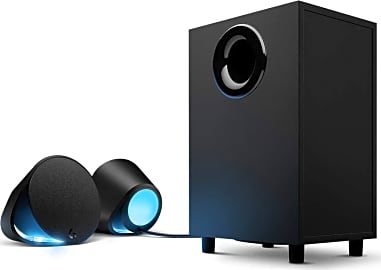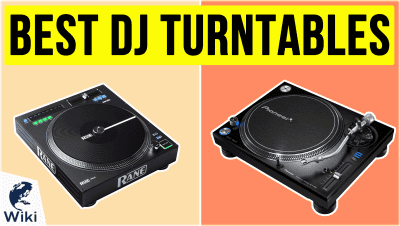The 10 Best Computer Speakers

This wiki has been updated 39 times since it was first published in May of 2015. Whether you use a traditional desktop computer or a laptop with built-in speakers, you don't have to settle for tinny, unsatisfying sound. Any of these advanced options will give you beautiful audio quality and a decent amount of bass, so you can actually feel the music. They are also great for gamers who want to fully experience explosions, and some allow for the addition of a subwoofer, too. When users buy our independently chosen editorial choices, we may earn commissions to help fund the Wiki.
Editor's Notes
December 24, 2020:
We have made four additions to our ranking in this latest update, and two of these are satellite speaker and subwoofer packages, namely the Creative Pebble Plus 2.1 and the Logitech G560 Lightsync. The former was included as its drivers feature on many review pages as a high-quality budget option from a reputable brand, and now they have added a downward-firing subwoofer to the package, while still maintaining excellent value. The latter was included as it caters to the gaming crowd by creating an immersive sound and light show as you play, while its subwoofer provides rumbling lower frequencies in the background.
Next, we added two sets of desktop speakers to the mix, starting with the Kanto YU6, which is an exceptionally well-made option with features to match, including aptX Bluetooth technology for lossless streaming, plus a phono preamp, should you keep your turntable near your PC. We also included the Audioengine A1, as, while we already had two of their models on our list, this small Texan company are fast-becoming the last word in small desktop speaker manufacture, and this recent addition to their product line is worth the hype in terms of sound quality and the abundance of features, packed into their small but well-crafted cabinets.
June 07, 2019:
You can spend anywhere from just a few bucks to a small fortune on speakers, depending on what you do with your computer and how big the room is. On the bottom end, the Creative set is pretty tough to beat as far as affordability goes, but if you don't take good care of them they won't last very long. The Mackies and Logitech Z623s are great mid-range choices, and if you're not a dedicated audiophile, you'll probably be pretty well satisfied with their output. The Kanto and Genius models both cost a touch more, but they're also slightly larger and offer a bit fuller sound.
If you want to make sure everything sounds really good, though, consider dropping a couple hundred or so on a more high-end set. The Klipsch deliver the clear and robust sound you'd expect from the company, and Logitech's Z906 is an excellent plug-and-play surround-sound solution. But for real heavy-hitting audio, consider a pair of bookshelf-style speakers. The Audioengines are both great overall choices and offer full sound and plenty of clarity at any volume. The Edifiers are also a very solid selection, but given that they're pretty large and the controls are on the back, they're just not quite as convenient to use.
Special Honors
Razer Nommo Pro If, like many modern gamers, you're into fancy RB lighting, look no further than this futuristic option from Razer. High-end features like THX certification and Kevlar-fiber drivers make it stand out as not only a flashy and good-looking 2.1-channel set, but also a great-sounding one. razer.com
Yamaha YHT-4930UBL Known as a "home theater in a box," this relatively expensive option from Yamaha is a good catch-all for any kind of media you like to consume, whether it's cinematic or interactive. Aside from being a somewhat large investment, you'll be well-served to spend some extra time placing and mounting the speakers perfectly for best results. yamaha.com
X Rocker Pro H4 And now for something completely different: this is an ergonomic gaming chair with 4 surround-sound speakers and a bass shaker built right into it. Sure, it probably works great for watching movies by yourself, but where it really shines in when there's an in-game explosion and you can feel it beneath the seat of your pants. xrockernation.com
How Zeroes and Ones Become Sound
This is especially true when the circuitry is coupled with quality hardware and big, strong magnets.
One look at that diagram can make a lot of people go cross-eyed. I don't blame them, it had the same effect on me, for ages, before I decided it'd be a good idea to at least try to understand it.
If you took the challenge above to create your own little amplifier in an attempt to better understand the speakers you're about to buy, you've actually already assembled a circuit that's similar to this one.
Amplification is a pretty cool thing. One of its pioneers, the co-inventor of the transistor William Shockley once said the following:
"If you take a bale of hay and tie it to the tail of a mule and then strike a match and set the bale of hay on fire, and if you then compare the energy expended shortly thereafter by the mule with the energy expended by yourself in the striking of the match, you will understand the concept of amplification."
Even if all you've ever done is put your cell phone in a cup or bowl to increase its resonance, you've experienced this concept at its most basic analog levels. Also, please do not attempt to recreate the mule experiment.
So, by degrees, any speaker system is designed to take a positive and negative signal (zeroes and ones), and convert it first into a small sound, and later along the stages into louder and louder sounds.
The quality and innovation in design of today's speakers and amplifiers allows for greater jumps in volume without distorting, so these systems can stay small and still provide both punch and clarity. This is especially true when the circuitry is coupled with quality hardware and big, strong magnets.
Sound Quality Starts Long Before the Speaker
I once had a substitute teacher who, for legal reasons, will remain nameless. One day toward the end of an otherwise uneventful class he asked us how many of us pirated music. This was at the height of Napster, Kazaa, and LimeWire, three of the more popular services for sharing music at the advent of illicit peer to peer file sharing.
The only hands that didn't go up belonged to the students who didn't know how to do it. It was so new, it was barely even frowned upon yet. When, after his little survey, he asked us if anybody knew what kbps was all about, no one could answer him.
This was at the height of Napster, Kazaa, and LimeWire, three of the more popular services for sharing music at the advent of illicit peer to peer file sharing.
You see, if you're streaming music, or even if you have your music stored on your computer to play it through iTunes or some other player, that music has undergone a significant amount of compression.
Most applications that play your music (not the streaming services) will show you the quality in the file measured in kilobytes per second, or kbps. The higher that number the better, but for a minimum of CD quality sound, you should shoot for at least 320 kbps.
Now, if you buy a set of speakers with a big subwoofer, and you take them home to a set of 128 kbps audio files, you might be upset at how muddy the low end sounds, even on this big, expensive sub.
The reason is that very low end and very high end frequencies are the first to suffer from digital music compression, which works much like the garbage compactor in Star Wars: Episode IV.
The best way to avoid this? Buy your music. Buy it from artists. Rip the CDs or use the provided download codes (artists consistently offer at least 320 kbps.) Then, and only then, will you get the most out of your investment.
The Sound of One PC Booting
Although Altec Lansing claims on their website to have "Created the computer speaker market," in 1990, their claim is difficult to prove.
This is when companies like Altec Lansing came along to fill the audio gap, and the race to better audio has been running ever since.
Speakers have been part of home computing since IBM introduced its model 5150 in 1981, although these were more beeps and bloops than the kinds of sounds we're searching for from modern models.
Nowadays, whenever you boot up an early PC and and hear those little beep-bloops, a Gen Xer gets his wings!
Initially, these beeps were meant to provide user feedback in the event of errors, but they soon found themselves deeply entrenched in the games that helped amplify (pun intended) sales of personal computers around the world.
As the complexity of available games and the capabilities of computer operating systems expanded, so too did the need for a broader audio profile that could accommodate the needs of a growing industry.
This is when companies like Altec Lansing came along to fill the audio gap, and the race to better audio has been running ever since.















